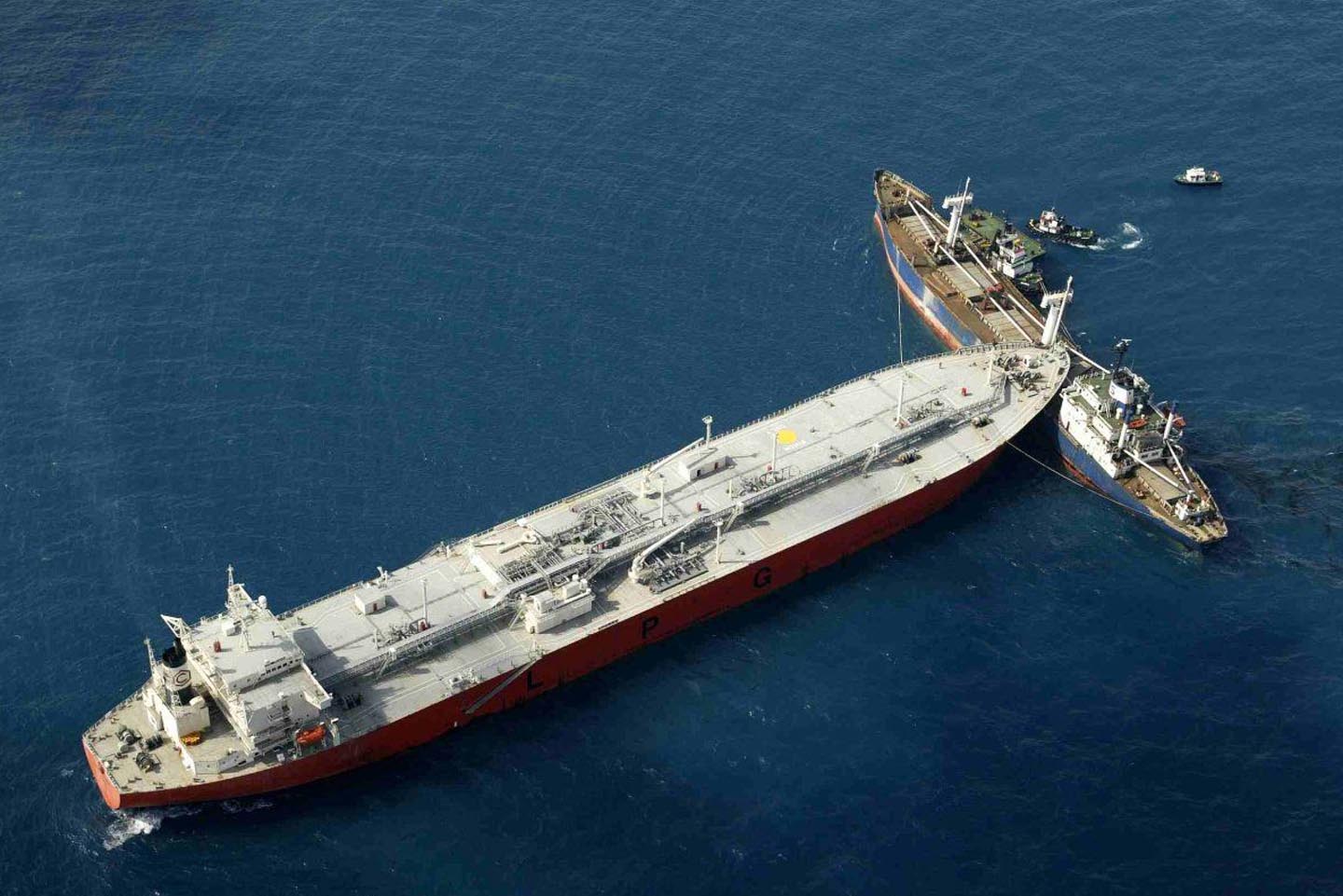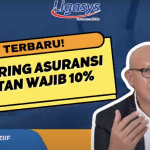Liga Asuransi – Awesome congregation of readers. The questions above are the questions most frequently asked by ship owners or shipping business people to us as individuals insurance broker.
Actually, from a risk management perspective, both are insurance guarantees that are really needed by ship owners. However, because the marine insurance industry from the beginning until now has been reluctant to guarantee the risks guaranteed by P&I, ship owners have been forced to look for other ways so that these risks can be guaranteed.
Finally they found a way, namely by forming a shipowners association or better known as “mutual” to jointly bear the risks faced by their members. So, the concept is similar to the concept of sharia insurance, namely risk sharing among members.
In general, the following are the differences between P&I and Marine Insurance.
| No. | Condition | P&I | Marine Insurance |
| 1. | Extent of Guarantee | Collision liability, wreck removal, crew liability, cargo liability, pollution liability | Hull and Machinery, cargo damage |
| 2. | Risk placement | P&I club – risk sharing with fellow shipowners association members. Almost all P&I Clubs are located outside Indonesia | Risk transfer to the insurance company through a reinsurance mechanism |
| 3. | Cost | Called a contribution or “call” | Insurance premium |
| 4. | Profit | Not for profit | Commercial |
By looking at the table above, it can be seen that the main difference between P&I and marine insurance is the risk placement process. Marine insurance (hull and machinery) is placed with an insurance company while P&I is placed with a P&I club which is not an insurance company. Thus P&I is not subject to the insurance acceptance mechanism.
Because P&I is a basic requirement for ship owners, ships are not even allowed to dock at certain ports if they don’t have P&I guarantees, so how do you get them?
The best way to get P&I coverage is through an insurance broker who is registered in Indonesia and who already has a collaboration with the P&I Club or with a representative from the club. Insurance brokers also have the freedom to obtain the most competitive and profitable P&I coverage and “call” fees. Apart from that, insurance brokers will help settle claims if they occur.
To understand more about the differences in guarantees between P&I and marine insurance, please read the explanation below. We wrote this information based on experience, knowledge and additional information from the website https://en.wikipedia.org/wiki/Protection_and_indemnity_insurance
Protection and Indemnity Insurance or if translated into protection and compensation, but it is better known as P&I insurance. P&I is a form of maritime insurance provided by the P&I Club which consists of ship owners.
The marine insurance companies that we usually know only provide protection for ship frames and machinery for ship owners, and cargo guarantees for cargo owners. Meanwhile P&I Club provides protection for risks that cannot be insured by traditional insurance companies.
Typical P&I coverage covers: the first carrier’s (shipowner’s) third party risk, for damage caused to the cargo during transport; secondly the risk of war; and thirdly the risk of environmental damage such as oil spills and pollution.
The P&I Club is a mutual insurance association of shipowners that provides risk pooling, information and representation for its members. Unlike marine insurance companies, which report to their shareholders, P&I Club reports only to its members. Initially, P&I Club members were usually ship owners, ship operators or death charterers, but more recently freight forwarders and warehouse operators have also joined.
If the insured pays a premium to the insurance underwriter for coverage that lasts for a certain time (for example, one year, or a trip), the P&I Club member instead pays the premium in the form of a call term which is used instead of the word premium. A call is an amount of money put into the club’s premium pool.
If at the end of the year, there are still funds remaining in the pool, each member will receive a reduced call the following year; But if the club has made a large payment due to an accident (say, after an oil spill) club members must immediately pay a further additional call to refill the pool.
The history of P&I begins at the same time as insurance began in the “coffee shops” of London in the 19th century. Shipowners and charterers will look for underwriters to insure their ships, and cargo owners (either shippers, importers or consignees) will insure their cargo. Carriers realize that it is often their own fault if cargo is lost or damaged at sea, and they seek to take out third party indemnity insurance in respect of cargo liability.
From the start, marine insurance companies showed reluctance to take such big risks, so ship owners finally responded by forming P&I clubs among their own ship owners. The advantage is that the club works for the shipowner, thereby eliminating the insurance company’s profit margin which makes P&I insurance much cheaper.
Perhaps the first protection association, the Shipowners’ Mutual Protection Society, was formed in 1855. It was intended to compensate for loss of life, injuries and collisions excluded from marine insurance policies beyond the sum assured limits of these policies. Similar associations were later formed in Great Britain, in Scandinavia, Japan and the United States.
In the second half of the 19th century, the number of claims increased rapidly as the number of passengers migrated to North America and Australia. Ship owners are becoming aware of the limitations in the amount of compensation provided by their insurance companies, especially when it comes to damage caused by ship collisions.
Although the UK Merchant Shipping Act 1854 had stipulated that, when evaluating insurance claims, the value of a ship should not be less than £15 per ton, many ships actually had a lower market value and existing insurance policies did not cover the gap in this liability. Compensation for damage resulting from a collision also does not include a quarter of the damage.
Existing hull and machinery insurance policies cover damage to the insured vessel and liability for the resulting damage, while the maximum amount a shipowner can recover after a collision is the insured value of the vessel, injured crew members may seek compensation from their employer. Later, the Fatal Accidents Act 1846 made it easier for passengers to make claims.
P&I relationship with Marine insurance
Marine insurance companies offer insurance for measurable risks: hull and engine insurance for ship owners, and cargo insurance for cargo owners. P&I Club provides insurance for broader and more uncertain risks that are not usually covered by marine insurance companies, such as third party risks. These risks include: the carrier’s liability to the cargo owner for damage to the cargo, the shipowner’s liability following a collision, environmental pollution and P&I war risk insurance, or legal liability due to acts of war affecting the ship.
Marine insurance companies are usually commercial companies that charge customers a premium to cover ship and cargo risks during the period of time the guarantee is in effect. In contrast, the P&I club is run like a non-profit cooperative and insurance is paid for by “call”. Club members contribute to the club’s general risk pool in accordance with the rules of the Collective Agreement.
If the risk pool cannot cover current claims, club members will be required to pay for further calls. If the pool has an excess, the club will request a lower call the following year or refund the money to the member. Only shipowners with an acceptable good reputation are permitted to join the P&I club and any P&I club member who suffers losses caused by reckless actions may be asked to leave the club.
Therefore, cargo insurance is generally covered twice by insurance standards. Firstly, the shipper or cargo owner will be protected by a marine insurance company which most likely has ‘all risks’ protection. Both carriers or shipowners will be covered by P&I but will usually limit their liability to the goods owner to a small portion of the goods. If cargo is lost or damaged, the cargo owner needs to file a claim first with the ship owner. However, the shipowner can avoid liability if it is proven that no damage was caused or if the Hague-Visby Rules provide for an exemption from liability. In this case, the cargo owner will claim his own insurance company. If the cargo owner fails to claim first against the shipowner, but instead claims against its own insurance company, the insurance company, after reimbursing its client, will by subrogation file a claim in its own right against the shipowner.
Here are the main exceptions to the P&I guarantee:
- Other insurance:
A P&I insurance claim may be rejected if the club manager thinks that the risk should be covered by another type of insurance that the shipowner should obtain, such as war risk insurance or hull insurance, which pays for collision liability and, in some cases, liability for damage to fixed and floating objects (“FFO”).
- Mutuality:
A claim may be rejected in whole or in part if the vessel owner takes inadequate steps to limit its liability to protect the club. The Club requires shipowners to ensure that the text in bills of lading and passenger tickets minimizes the shipowner’s liability (within the scope of section 2 of the Unfair Contract Terms Act 1977). The Club expects shipowners to comply with all flag state requirements regarding maritime safety and environmental protection.
- Moral risk: Liabilities resulting from fraudulent non-delivery of cargo, especially delivery of cargo that does not require an original bill of lading, are usually not covered by P&I insurance.
- Intentional violation:
Intentional loss by the insured, or who “turns a blind eye” knowing it is likely to occur.
- Public policy:
Legal liability used to not be covered as a matter of course. Legal liability is imposed only for intentional violations, and reliability requirements generally include legal liability guarantees. Currently, the laws of many countries impose “legal” liability for negligent conduct that damages the environment, in circumstances that do not rise to the level of “intentional wrongful conduct” under marine insurance law.
Modern P&I developments
European Union Directive 2009/20/EC
These conditions applied in all 27 Member States before 1 January 2012. The Directive requires mandatory P&I to insure EU and foreign vessels in EU waters and ports. Foreign ships that do not comply with the Directive may be expelled or refused entry to any EU port, although the ship may be given time to comply before expulsion. Since EU competences generally do not cover penology, the Directive requires Member States themselves to establish penalties for any breach.
The Rotterdam Rules
The Rotterdam Rules are a set of rules designed to replace the outdated Hamburg Rules and the Hague-Visby Rules (both of which were international conventions for imposing duties on carriers of goods by sea). If the Rotterdam Rules apply, they will cover not only sea voyages, but all parts of multimodal contracts of carriage by sea means. After that, road transport, warehouses and shipping companies also need P&I protection. This will inevitably lead to an increase in warranties and the importance of P&I protection, and perhaps reduce the prevalence of standard cargo insurance.
Non-mutual P&I cover
Conventional P&I protection has been used primarily by shipowners and charterers, but a recent development is P&I protection for time and voyage charterers. Because these charterers may not have a long-term relationship with any shipowner, and may have periods when they are not chartering at all, a shared model based on sharing shared responsibilities is not necessarily ideal. Some non-mutual “tenant P&I clubs” have emerged where private companies can act as intermediaries (brokers) to provide third party coverage through insurance underwriters, with conventional premium payments, rather than P&I calls. In addition to brokerage services, such companies may offer conventional P&I services.
We hope that this short article can help you understand the differences between P&I and Marine Insurance. For further explanation, follow our next article.
This article is presented by L&G Insurance Broker, a smart insurance broker which has experience in providing P&I guarantees to dozens of ships in Indonesia, including for one FPSO (Floating Storage Production and Offloading) unit with a limit of liability of USD 200,000,000.
For your ship’s P&I Insurance needs, contact L&G right now!
—
LOOKING FOR P&I INSURANCE PRODUCTS? DON’T WASTE YOUR TIME AND CONTACT US NOW
24 JAM L&G HOTLINE: 0811-8507-773 (CALL – WHATSAPP – SMS)
website: lngrisk.co.id
Email: customer.support@lngrisk.co.id
—














